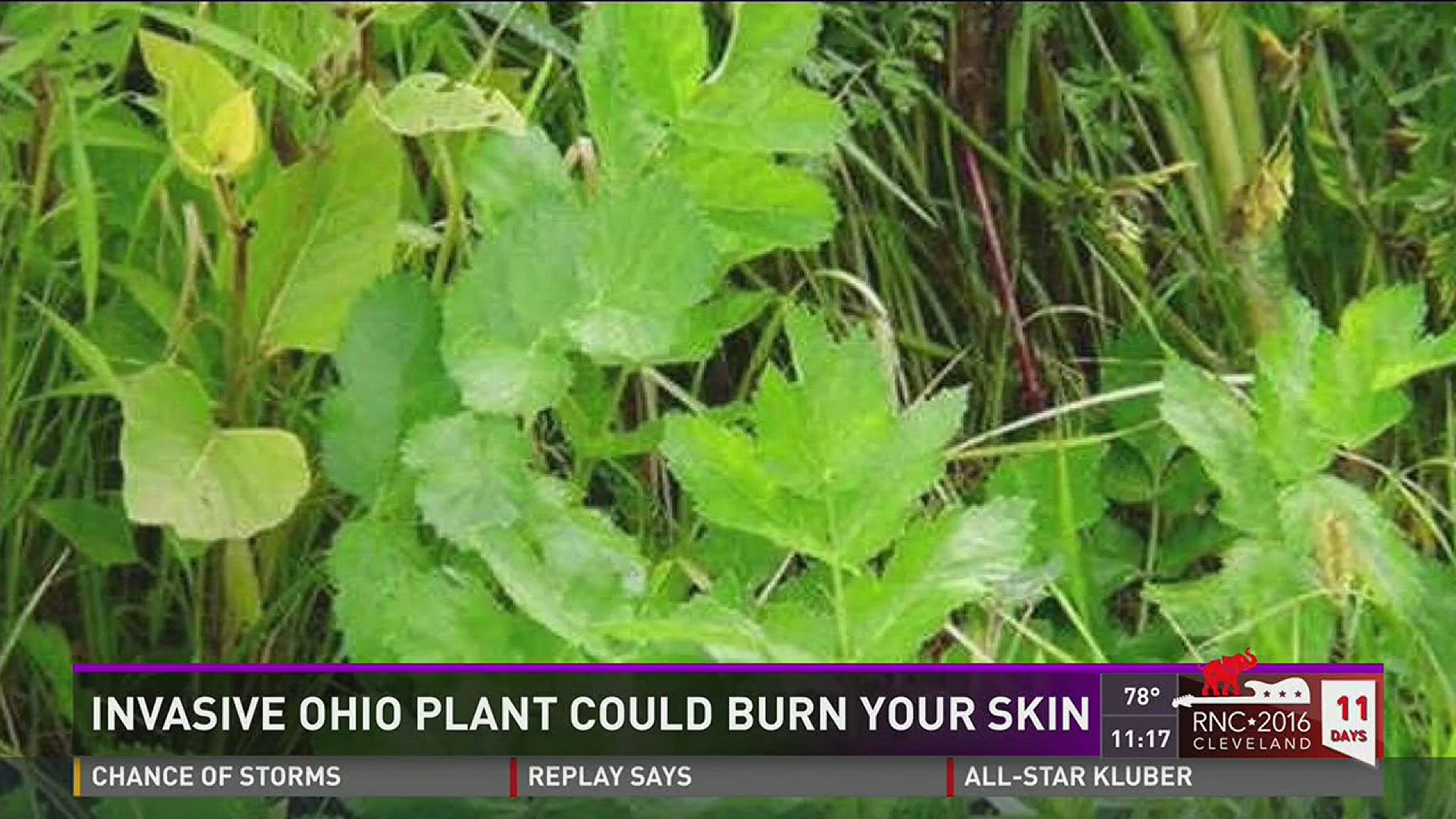BUCYRUS - Nature enthusiasts beware: there's a new plant in Ohio that could send you to the hospital.
It's called wild parsnip, and Crawford County OSU Extension Agent Jason Hartschuh said it's an invasive, poisonous weed that once grew only in Europe.
A brief touch of wild parsnip will make the skin red and itchy, but Hartschuh said contact with juices from the plant will quickly produce a severe rash.
"It's a lot like a burn rash," Hartschuh said. "You'll start to blister up pretty quickly, like you would after a high degree burn."
Although the weed looks identical to edible parsnips, the two should never be confused.
"It's not something you want to grab," Hartschuh said. "If you didn't plant it and you see it growing, I would assume it's wild parsnip. I would caution you to be careful around it."
Unfortunately for Ohio, the invasive plant flourishes in the state's climate and well maintained croplands.
"It likes heavy, rich soils. Fertile areas," Hartschuh said. "It will probably be a common weed around here that we will deal with for many years."

Wild parsnip was accidentally introduced to Ohio more than five years ago, but Hartschuh said the weed has only recently propagated its way into the central region of the state. He said the invasive plant will continue to spread, and soon will become a common site along roadways and in fields.
The poisonous weed is so pesky that it was placed on the state's noxious weed list, according to Brett Gates, deputy communication director for the Ohio Department of Agriculture.
"That gives authority to local municipalities to control those weeds if they are found," Gates said.
While no attempts to eradicate the weed are planned, Gates said townships may someday want to remove thickets of the poisonous plant that have grown on unkempt properties. Since the species is still very new to the region, Gates said local scientists don't yet have a firm idea of how the infestation will play out.
Ohio farmers will rely heavily upon the state's scientists as the alien plant spreads, according to Joe Cornely, a spokesman for the Ohio Farm Bureau.
Cornely said he hopes the plant is kept from spreading into the many fertile fields across the Buckeye State.
"These kinds of challenges are exactly why we are big proponents of agricultural research here in Ohio," Cornely said.
Until more is known about wild parsnips, Hartschuh said the best anyone can do is keep the poisonous plant from severely burning their skin.
"If you have mowed paths, you'll be fine," Hartschuh said. "Otherwise you'll want to cover yourself."
ztuggle@gannett.com
419-563-9225
Twitter: @zachtuggle

